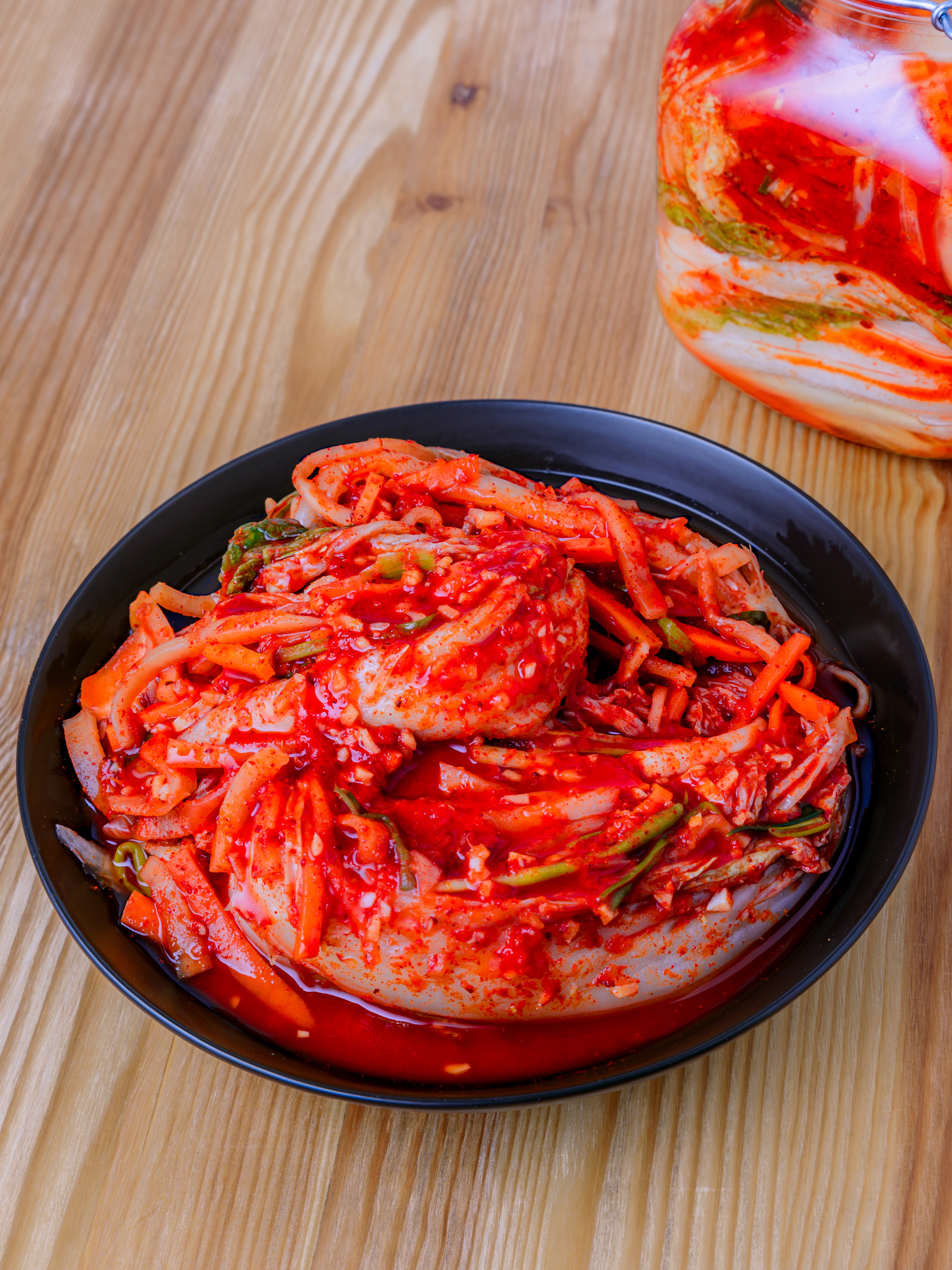
Servings: 7 liters
Calories: 103kcal
Ingredients
- 4 kg Napa cabbage Remove any thick outer leaves, but leave the cabbage whole.
- 3.9 liters of water
- 285 g coarse Korean sea salt for the brine
- 97 g table salt medium-sized crystals (for sprinkling)
Kimchi Seasoning / Kimchi Paste
- 2 tablespoons glutinous rice flour
- 360 ml water
- 145 g gochugaru
- 540 g Korean radish (or daikon) julienned
- 1 tablespoon fine sea salt
- 3.5 tablespoons fish sauce
- 2 tablespoons salted fermented shrimp chopped
- 90 g Korean chives cut into 5 cm long segments
- 140 g carrots julienned
- 42 g minced garlic
- 0.5 tablespoon minced ginger
- 2 tablespoons sugar
- 75 g onion blended (with an immersion blender or vegetable chopper) or finely grated
Procédé
- Cut the Napa cabbage into quarters and rinse under running water. Keep the core intact.
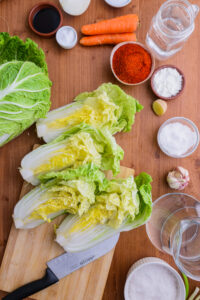
- Dissolve the coarse salt in the water in a large bowl.

- Dip the cabbage quarters in the brine, one at a time.
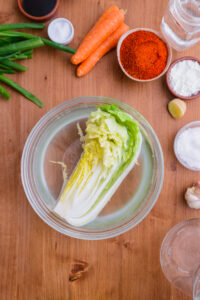
- Transfer each quarter to a tray to salt further.
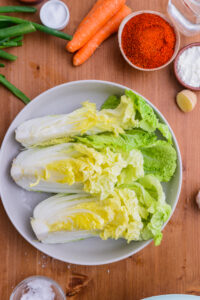
- Sprinkle some table salt and rub it into the thick white parts of the leaves. Gently open each leaf and sprinkle salt onto the thick white parts. Repeat with the remaining cabbage. Reserve the brine you used to soak the cabbage for later.
- Place the salted cabbage in a large plastic bag or a large bucket (cabbage wedge side facing up) and pour in the reserved brine.
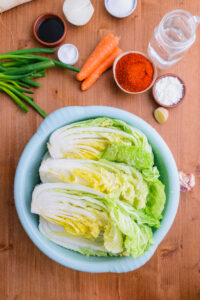
- Close the plastic bag. If you're using a bucket, place something heavy on the cabbage to weigh it down (e.g., a heavy pot filled with water).
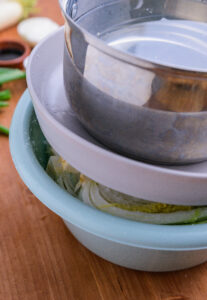
- Let the cabbage brine for 6 hours, turning it upside down every 2 hours. Using a large food-grade plastic bag makes flipping much easier than using a large bucket.
- When brining is finished, rinse the cabbage under running water, paying special attention to the thick white parts, to remove excess salt. Set in a colander to drain for 1 hour.
- Meanwhile, prepare the sweet rice paste. Combine the glutinous rice flour and water in a saucepan.
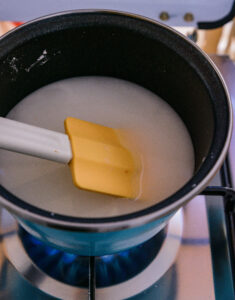
- Bring to a boil over medium heat and cook for 5 to 8 minutes, until thickened.
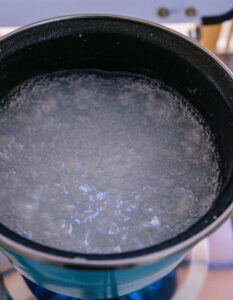
- Once thickened, transfer the rice paste to a medium bowl and let cool.
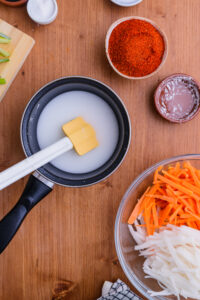
- Once cooled, add the gochugaru and mix well.

- In a large mixing bowl, combine the radish, fine sea salt, fish sauce, and salted shrimp. Let stand for 10 minutes to lightly season the radish. Add the Korean chives, carrots, minced garlic, minced ginger, sugar, blended onion, and the gochugaru mixture. Mix well. The kimchi seasoning/paste is now ready to use.

- Place one cabbage quarter on a tray. Spread the seasoning over each leaf (you only need to season one side). Use 1 to 2 small handfuls of seasoning per quarter. Repeat with the remaining cabbage. Do not detach the leaves from the core; keeping them attached helps them hold together.

- Transfer the kimchi to a kimchi container or another airtight container and seal. Leave at room temperature for 24 hours, then refrigerate. You can start eating it once chilled, but waiting another 3 to 4 days will develop deeper flavor.
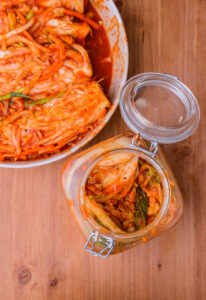
Notes
Kimchi can generally be kept in the refrigerator for a few months, but depending on storage conditions, you can keep it for about a year.
Ingredient notes
Korean sea salt is not essential; substitute with coarse salt.
Salted shrimp are optional, and Korean chives can be replaced with scallions.
Nutrition
Calories: 103kcal | Féculents: 37g | Protein: 9g | Fat: 7g | Saturated Fat: 1g | Polyunsaturated Fat: 4g | Monounsaturated Fat: 2g | Sodium: 33425mg | Potassium: 1280mg | Fiber: 19g | Sugar: 11g | Vitamin A: 1818IU | Vitamin C: 27mg | Calcium: 249mg | Iron: 2mg
As-tu réalisé cette recette ?Tague @marcwiner sur Instagram !